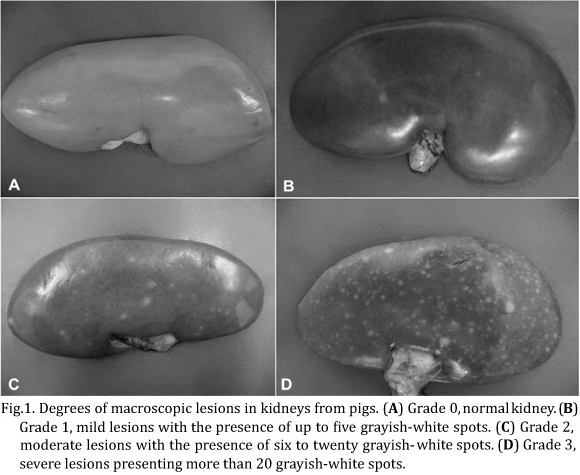This study evaluated histological lesions in kidney samples from pigs with nephritis in two slaughterhouses in the State of Mato Grosso, Brazil. Four hundred samples were subjected to histology, anti-porcine circovirus type 2 (PCV2) immunohistochemistry (IHC), anti-Leptospira sp. immunofluorescence (IF), and polymerase chain reaction (PCR) for PCV2, porcine parvovirus (PPV), and Torque teno virus type 1 and 2 (TTV1, TTV2) detection. Histological lesions were found in 81% of the samples, and mononuclear interstitial nephritis was the most frequent lesion (77.50%). A follicular pattern was observed in 40.97% of the interstitial nephritis lesions. PCV2, PPV, TTV1, and TTV2 were identified in the kidneys by PCR in 27.25%, 28.50%, 94%, and 87.5% of the samples, respectively. Leptospira sp. was not detected through IF. Infection by PCV2 (PCR) and the presence of histological lesions (P=0.008) and giant cells (P=0.0016) were significantly associated. An association was observed between the TTV2-TTV1 co-infection (P<0.0001) and the risk for pathogenesis. These findings indicated that PCV2, PPV, TTV1, and TTV2 were widely distributed among pigs in the local farms and that the presence of these agents should be considered in the differential diagnosis of kidneys with interstitial nephritis in pigs.
Pigs; interstitial nephritis; porcine circovirus type 2; torque teno virus





